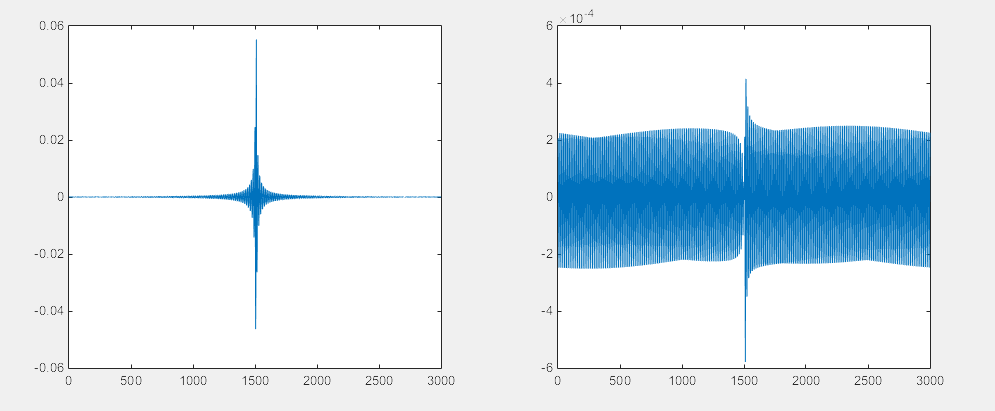It shows that if we take the inverse Fourier transform of a Hermitian function, real part even and imaginary part is odd we should get a purely real function in the time domain.
I tried to replicate this by taking a frequency response I have, zero padding it making it even for the real and odd in the imaginary. Shown below
 Although my ifft in Matlab I still have a significant imaginary component, the real is shown left and imaginary on the right.
Although my ifft in Matlab I still have a significant imaginary component, the real is shown left and imaginary on the right.
 I also wrote my own script for DFT/IDFT and tested it on a sine function to make sure I get the same as Matlab. Maybe I have missed something?
I also wrote my own script for DFT/IDFT and tested it on a sine function to make sure I get the same as Matlab. Maybe I have missed something?


fft? Also, a simple one-sample shift will lead to a sinusoidal modulation after dft; make sure you're using the right ,fftshift`ifftshift` $\endgroup$